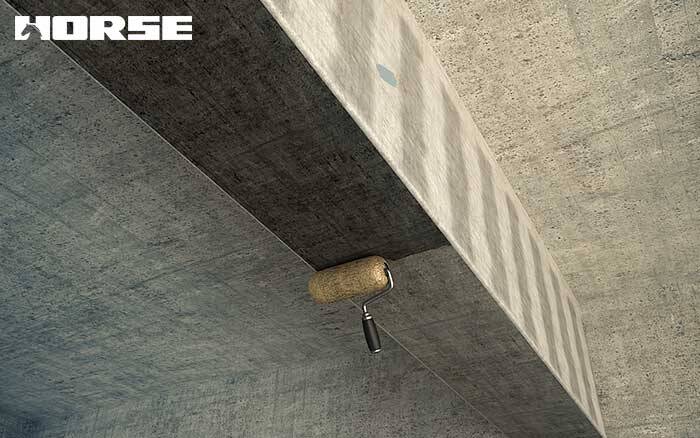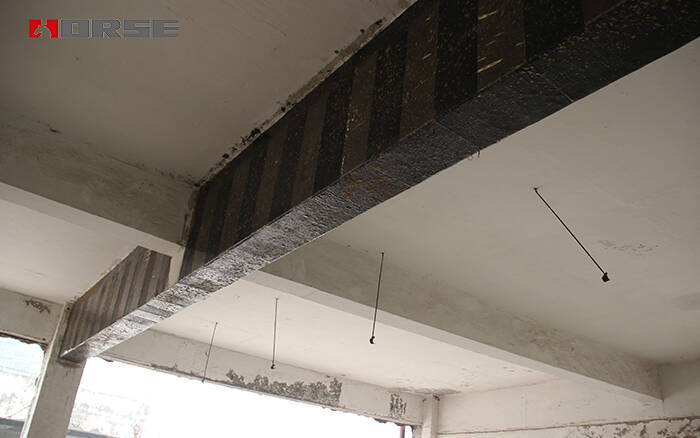Solutions
Horse Construction offers full range of structural strengthening materials with technical supports, documentation supports, products supports, project supports.
Structural Reinforcement Material Past, Status Quo And Future

The Past of Structural Reinforcement Materials
The development history of reinforcement materials can be traced back to ancient times. In ancient Egypt, people had already started using materials such as lime and gypsum to reinforce buildings. In ancient Rome, people used materials such as cement, lime, and asphalt to build infrastructure such as roads and bridges, and used structures such as stone columns and arches to enhance the stability of the building.
In modern times, with the development of industrialization, new types of reinforcement materials continue to emerge. In the early 19th century, people began to use steel to reinforce buildings, such as the Eiffel Tower, which was built using steel. In the early 20th century, concrete gradually became one of the main materials for strengthening buildings.
In the 1960s, fiber reinforced materials such as glass fiber and carbon fiber were applied in the fields of aviation and aerospace, and gradually applied in the field of structural reinforcement. Since the 21st century, with the continuous development of technology, reinforcement materials have also been constantly innovating and upgrading. For example, the application of advanced technologies such as micro nanotechnology to strengthen materials and self-healing materials makes the strength and durability of reinforcement materials more outstanding.
In short, with the continuous development of human civilization, reinforcement materials are also constantly evolving and advancing. From ancient lime and gypsum to modern steel, concrete, and fiber reinforced materials, reinforcement materials have played an important role in human history.
Current status of structural reinforcement materials
Structural reinforcement materials are materials used to reinforce and repair existing buildings and infrastructure, and their current situation is mainly manifested in the following aspects:
Material types: Currently, there are many types of materials used for structural reinforcement, mainly including steel, carbon fiber, glass fiber, polymer, concrete, etc. Among them, fiber reinforced composite materials such as carbon fiber and glass fiber have gradually become the mainstream materials in the field of structural reinforcement due to their high strength, lightweight, and corrosion resistance.
Application scope: Structural reinforcement materials are widely used for the reinforcement and repair of bridges, buildings, underground pipelines, reservoirs and other buildings and infrastructure, in order to extend their service life and improve their safety performance.
Technical level: With the continuous progress of technology, the technical level of structural reinforcement materials continues to improve. For example, advanced technologies such as micro nanotechnology reinforcement materials and self-healing materials have been developed, which can to some extent improve the strength and durability of reinforcement materials.
Industry standards: In order to ensure the quality and safety of structural reinforcement materials, various countries have formulated corresponding industry standards and specifications. For example, ACI 440 and ACI 562 in the United States, EN 1504 in Europe, etc.
In summary, the current situation of structural reinforcement materials shows a diverse variety of material types, wide application range, continuously improving technical level, and sound industry standards, laying a solid foundation for the development of the field of structural reinforcement.

The Future of Structural Reinforcement Materials
With the development of the global economy and the increasing demand for infrastructure such as buildings, bridges, and roads, the demand for reinforcement materials will continue to grow. In the future, the development direction of reinforcement materials may focus on the following aspects:
Green and environmentally friendly: With the increasing global attention to the environment, the research and development of reinforcement materials will increasingly focus on environmental performance. For example, developing more environmentally friendly materials can reduce environmental pollution.
High strength and durability: With the continuous progress of technology, the strength and durability of reinforcement materials will continue to improve. For example, developing more durable fiber reinforced materials can extend the lifespan of infrastructure.
Intelligence and self-healing: With the continuous development of artificial intelligence technology and the Internet of Things, reinforcement materials will also become increasingly intelligent and self-healing. For example, developing intelligent materials that can automatically detect and repair structural cracks can reduce maintenance costs and improve safety performance.
Multifunctionality: Future reinforcement materials will have more functions, such as flame retardancy, insulation, waterproofing, anti-corrosion, etc. This can reduce the maintenance cost of infrastructure and improve its service life.
In short, reinforcement materials will continue to play an important role in the future. With the continuous progress of technology, reinforcement materials will become more environmentally friendly, efficient, intelligent, and multifunctional.
You can find anything here you are in need of, have a trust trying on these products, you will find the big difference after that.

High strength, unidirectional carbon fiber wrap pre-saturated to form a carbon fiber reinforced polymer (CFRP) wrap used to strengthen structural concrete elements.

High strength, unidirectional carbon fiber fabric pre-saturated to form a carbon fiber reinforced polymer (CFRP) fabric used to strengthen structural concrete elements.

High strength, unidirectional carbon fiber sheet pre-saturated to form a carbon fiber reinforced polymer (CFRP) sheet used to strengthen structural concrete elements.